Note; All products on this site are special products, the market price has been fluctuating, the specific customer service offer shall prevail, because the product is a new product, the picture is not a real shot, please confirm with customer service before placing an order model and product, price and other details, the site used, new are for sale, please contact customer service communication. The high-reliability redundancy module TK-PRR021 51309288-275 is designed for Honeywell Experion PKS (Process Knowledge System) and TPS (TotalPlant Solution) automation platforms. As a core component ensuring the uninterrupted operation of critical industrial controllers, it enables 1+1 hot standby redundancy — automatically switching to a backup controller when the primary controller fails, eliminating single points of failure and maximizing system availability. This module complies with industrial-grade reliability standards (the IEC 61508 SIL 2 standard for safety-related applications) and integrates advanced synchronization, monitoring, and switching logic. It enables real-time data synchronization between the primary and backup controllers (e.g., process variables, control logic states) and features comprehensive diagnostic capabilities to detect faults in controllers, power supplies, or communication links. Ideally suited for industries requiring 24/7 continuous operation (such as the oil & gas, chemical, and power generation industries), it seamlessly integrates with Honeywell’s C200/C300 controllers and Series 90 controllers, serving as a "safety guarantee" in process control systems where unplanned downtime could lead to significant production losses or safety risks.
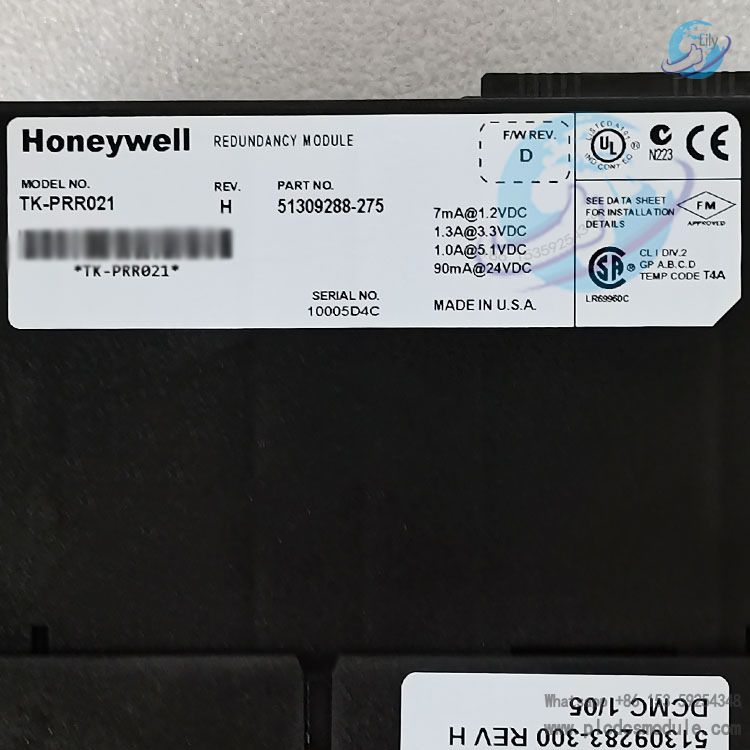
Technical Specifications
2.1 Redundancy Configuration & Synchronization
| Parameter Category | Specifications |
|---|
| Redundancy Mode | 1+1 hot standby (primary-backup); automatic failover; manual switchover supported |
| Synchronization Scope | - Process data: Analog/digital I/O values, setpoints, alarm status
- Control logic: PID loop states, sequential control steps, interlock conditions
- Configuration data: Controller firmware, I/O mapping, user programs |
| Synchronization Latency | <10 ms (real-time data); <50 ms (configuration data) |
| Failover Time | <200 ms (from primary fault detection to backup activation); no process interruption |
2.2 Communication & Interface
| Parameter Category | Specifications |
|---|
| Compatibility | - Controllers: Honeywell C200/C300 (Experion PKS), Series 90 (TPS)
- Backplane: Honeywell Universal Backplane (for C200/C300), TPS I/O Backplane |
| Communication Protocols | - Internal: Honeywell ControlNet (for controller synchronization)
- External: Modbus-TCP (for diagnostic data transmission to SCADA/DCS)
- Status Signals: 4 digital outputs (for failover status, controller health) |
| Diagnostic Interface | RS-232 serial port (for local configuration via Honeywell EZBuilder software); Ethernet port (for remote monitoring) |
2.3 Power & Environmental Requirements
| Parameter Category | Specifications |
|---|
| Power Supply | - Input Voltage: +5 V DC (from controller backplane); redundant power input (auto-switching if single backplane power fails)
- Power Consumption: 3.5 W (typical); 5.0 W (maximum, during failover) |
| Operating Temperature | -40°C ~ +70°C (wide-temperature range); -20°C ~ +60°C (standard version) |
| Storage Temperature | -55°C ~ +85°C |
| Humidity Resistance | 5% ~ 95% (non-condensing, IEC 68-2-3); 93% (40°C, 56 days, IEC 68-2-30) |
| Vibration & Shock | - Vibration: 5~500 Hz, 3.0 g (IEC 68-2-6, sinusoidal); 10~2000 Hz, 5 g (random, IEC 68-2-34)
- Shock: 30 g (11 ms duration, IEC 68-2-27, half-sine) |
| Safety & EMC | - Safety Certification: IEC 61508 SIL 2, UL 508 (Industrial Control Equipment)
- EMC Compliance: EN 55032 Class A (EMI), EN 61000-4-2 (ESD: 8 kV air / 6 kV contact), EN 61000-4-3 (RF immunity: 10 V/m) |
2.4 Mechanical Dimensions
| Parameter | Details |
|---|
| Form Factor | Honeywell standard 3U rack-mount module; dimensions: 140 mm (W) × 100 mm (H) × 210 mm (D) |
| Weight | Approximately 0.9 kg (without cables) |
| Mounting | Compatible with Honeywell Experion PKS/TPS chassis (3U slots); hot-swappable (no system shutdown required for replacement) |
| Connector Type | 1 x 64-pin backplane connector (for power/synchronization); 1 x RS-232 port (DB9 female); 1 x Ethernet port (RJ45); 4 x terminal blocks (for digital status outputs) |
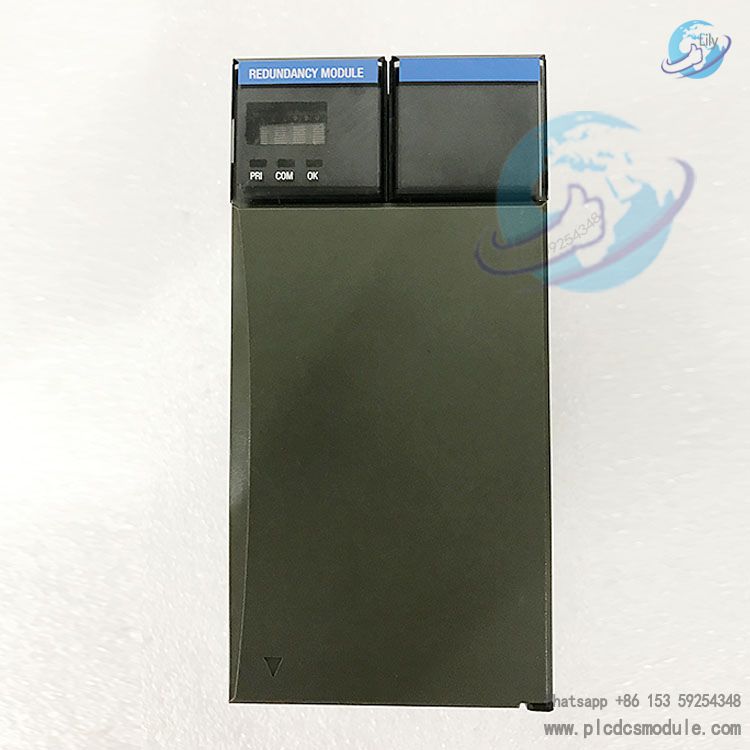
3. Application Fields
The HONEYWELL TK-PRR021 51309288-275 is tailored for critical process control systems where downtime is unacceptable. Key application areas include:
3.1 Oil & Gas
- Upstream Production: Used in offshore platforms and onshore wellheads to redundantize controllers managing well pressure, flow rate, and gas separation. Automatic failover ensures no interruption to well operations—critical for avoiding production losses (up to $100k/hour for offshore wells) and preventing environmental leaks.
- Downstream Refining: Redundantizes C300 controllers in distillation columns, hydrocrackers, and blending units. The module fast synchronization (<10 ms) maintains precise control of temperature and pressure during failover, avoiding product quality defects (e.g., off-spec gasoline) and equipment damage.
3.2 Chemical & Petrochemical
- Continuous Processes: Protects controllers in ethylene crackers, ammonia plants, and polymer production lines. For example, in a polyethylene plant, the TK-PRR021 ensures the backup controller retains real-time data on reactor temperature and monomer flow—preventing reactor shutdown (which can cost $500k+ in restart costs) if the primary controller fails.
- Batch Processes: Redundantizes Series 90 controllers in pharmaceutical and specialty chemical batch production. Synchronization of sequential control steps ensures batch continuity during failover, complying with FDA regulations (e.g., 21 CFR Part 11) by avoiding data loss.
3.3 Power Generation
- Thermal Power Plants: Redundantizes C200 controllers managing boiler combustion, turbine speed, and steam pressure. Fast failover (<200 ms) prevents turbine overspeed or boiler pressure spikes, avoiding catastrophic equipment damage and ensuring grid stability.
- Renewable Energy: Used in large-scale solar farms and wind parks to redundantize controllers for inverter coordination and energy storage management. The module’s wide-temperature tolerance (-40°C ~ +70°C) withstands outdoor environments, ensuring continuous power feed to the grid.
3.4 Water & Wastewater Treatment
- Municipal Water Plants: Redundantizes controllers for pump stations, filtration systems, and chemical dosing. Failover without process interruption ensures consistent water quality and avoids overflow events (which can lead to environmental fines and public health risks).
- Industrial Wastewater: Protects controllers in petrochemical or mining wastewater treatment facilities, where precise pH and contaminant level control is critical. The module’s diagnostic capabilities alert operators to controller faults, enabling predictive maintenance.
4. Key Advantages
4.1 Zero-Downtime Failover & Fast Synchronization
- <200 ms Failover Time: Detects primary controller faults (e.g., CPU failure, power loss) and activates the backup in under 200 ms—faster than industry averages (300~500 ms). This ensures no disruption to time-sensitive processes (e.g., turbine speed control, chemical dosing).
- Real-Time Data Sync: Synchronizes process variables, control logic, and configuration data with <10 ms latency. Unlike competitors’ modules (which may omit configuration sync), the TK-PRR021 ensures the backup controller is identical to the primary, eliminating post-failover reconfiguration.
4.2 Robust Reliability & Safety Compliance
- SIL 2 Certification: Meets IEC 61508 SIL 2 standards, making it suitable for safety-related applications (e.g., emergency shutdown systems, turbine protection). Redundant power inputs and backplane isolation further enhance fault tolerance.
- Comprehensive Diagnostics: Monitors 12+ key parameters (primary/backup health, synchronization status, power supply voltage) and sends alerts via Modbus-TCP or local LEDs. This enables predictive maintenance (e.g., replacing a degraded primary controller before failure) and reduces unplanned downtime.
4.3 Seamless Honeywell Ecosystem Integration
- Plug-and-Play Compatibility: Designed exclusively for Honeywell Experion PKS (C200/C300) and TPS (Series 90) platforms. No third-party adapters or custom firmware are needed—simply install the module and configure via EZBuilder software, reducing setup time by 50% vs. cross-platform modules.
- Unified Monitoring: Integrates with Honeywell Experion HMI/SCADA systems, allowing operators to view redundancy status (primary/backup active, sync health) alongside process data. This eliminates the need for separate redundancy monitoring tools, simplifying operations.
4.4 Harsh-Environment Durability & Hot-Swapping
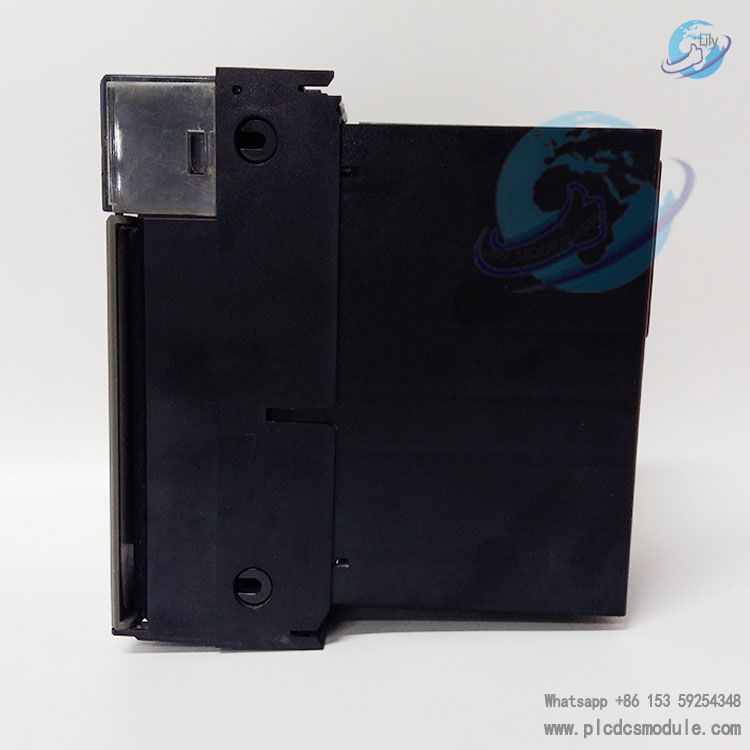
Working Principle
The HONEYWELL TK-PRR021 operates as a redundancy manager between primary and backup controllers, ensuring seamless failover and data consistency. Its core working principle is divided into 6 stages:
5.1 Initialization & Redundancy Pair Setup
- When powered on, the module first communicates with the connected primary (C200/C300/Series 90) and backup controllers via the Honeywell ControlNet. It verifies controller compatibility (firmware version, model) and establishes a secure synchronization channel.
- The module configures the redundancy pair: The primary controller is set to "Active" mode (controls I/O and process logic), while the backup is set to "Standby" mode (receives real-time data from the primary but does not issue control commands).
5.2 Real-Time Data Synchronization
- Continuous Sync: The TK-PRR021 facilitates bi-directional data transfer between primary and backup controllers at <10 ms intervals. Key data includes:
- Analog/digital I/O values (e.g., 4~20 mA pressure signals, DI valve status).
- Control logic states (e.g., PID loop output, SFC step progression).
- Configuration data (e.g., user programs, I/O mapping, alarm thresholds).
- Data Validation: The module checks for data integrity using CRC32 checksums. If corrupted data is detected, it requests retransmission from the primary—ensuring the backup’s data is identical to the primary’s.
5.3 Fault Detection
- Primary Controller Monitoring: The module checks the primary controller’s health every 10 ms via "heartbeat" signals (periodic status messages). A fault is detected if:
- No heartbeat is received for >50 ms (e.g., CPU failure).
- Primary reports critical errors (e.g., memory parity error, I/O communication loss).
- Primary power supply drops below 4.75 V DC.
- Self-Monitoring: The module also checks its own components (power supply, communication ports) and the backup controller’s health. If the backup is faulty, the module alerts operators via HMI and disables failover to avoid switching to an unreliable unit.
5.4 Automatic Failover
- Trigger: When a primary fault is confirmed, the module sends a "Failover Command" to the backup controller within 50 ms.
- Backup Activation: The backup controller switches from "Standby" to "Active" mode, immediately taking over I/O control and process logic execution. It uses the latest synchronized data to ensure no process disruption (e.g., PID loops maintain setpoints, valves remain in correct positions).
- Status Update: The module updates the HMI/SCADA system with failover details (time, fault code, new active controller) and activates a digital output (e.g., "Failover Occurred" LED) for local alerting.
5.5 Manual Switchover (Optional)
- For planned maintenance (e.g., primary controller firmware update), operators can initiate manual switchover via EZBuilder software or HMI.
- The module verifies the backup’s health, synchronizes any pending data, and switches the backup to "Active"—allowing the primary to be safely powered down without process interruption.
5.6 Post-Failover Recovery
- After the faulty primary is repaired/replaced, the module automatically re-establishes it as the new "Standby" controller. It synchronizes all data from the active backup to the repaired primary (reverse sync) to ensure parity.
- Operators can choose to switch back to the original primary (via manual switchover) or keep the backup as active—providing flexibility for maintenance scheduling.
Customers who purchased this product are also browsing the following products:
HONEYWELL FC-SDIL-1608 digital input module
Honeywell TC-PPD011 51309241-125 Battery Extension Module
Bently Nevada 330106-05-30-10-02-CN Proximity Sensor
WOODWARD 9907-149 Electronic Overspeed Trip Device










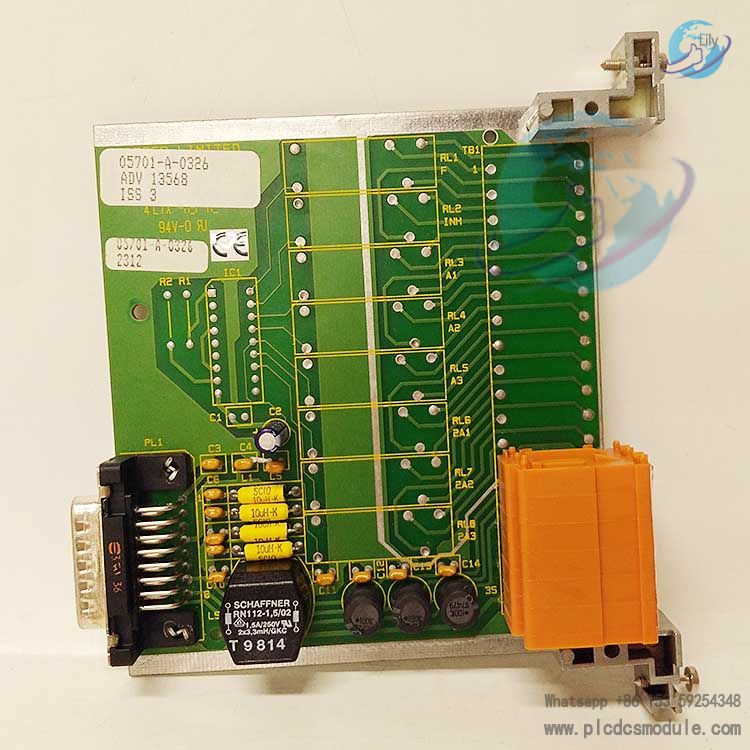
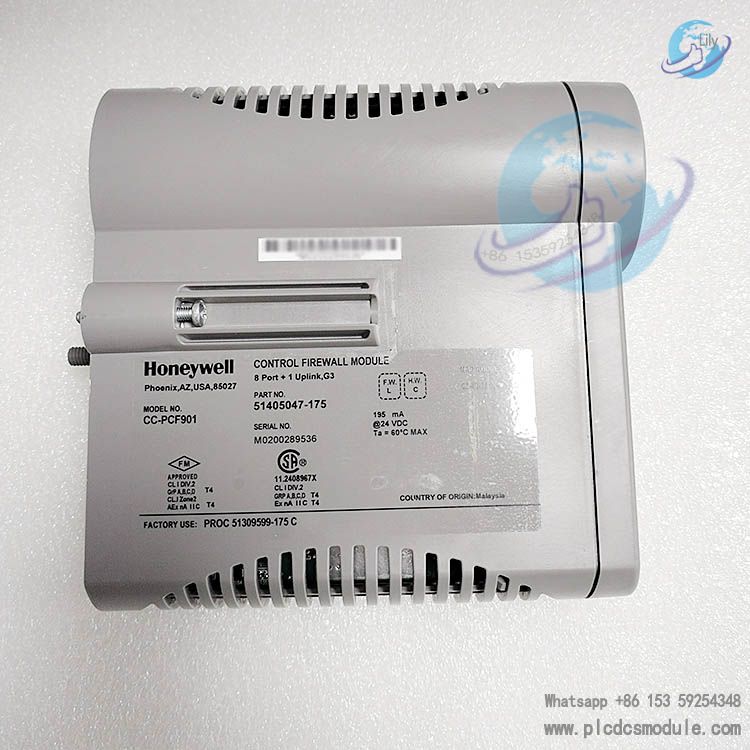
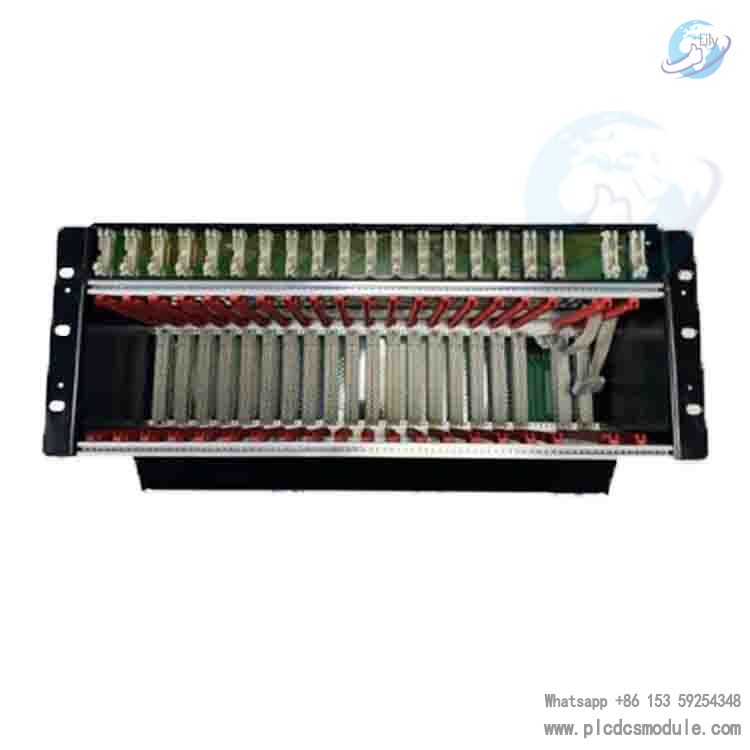


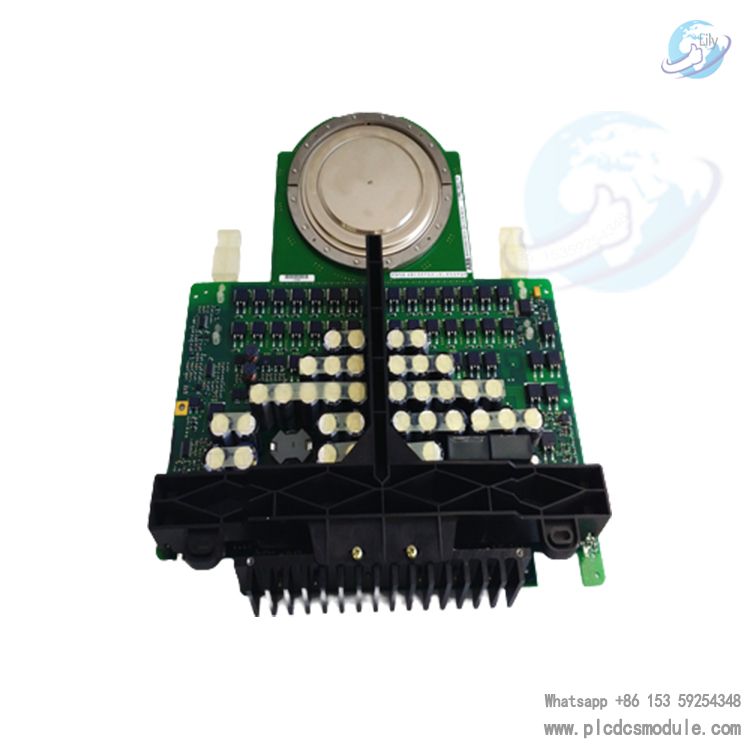

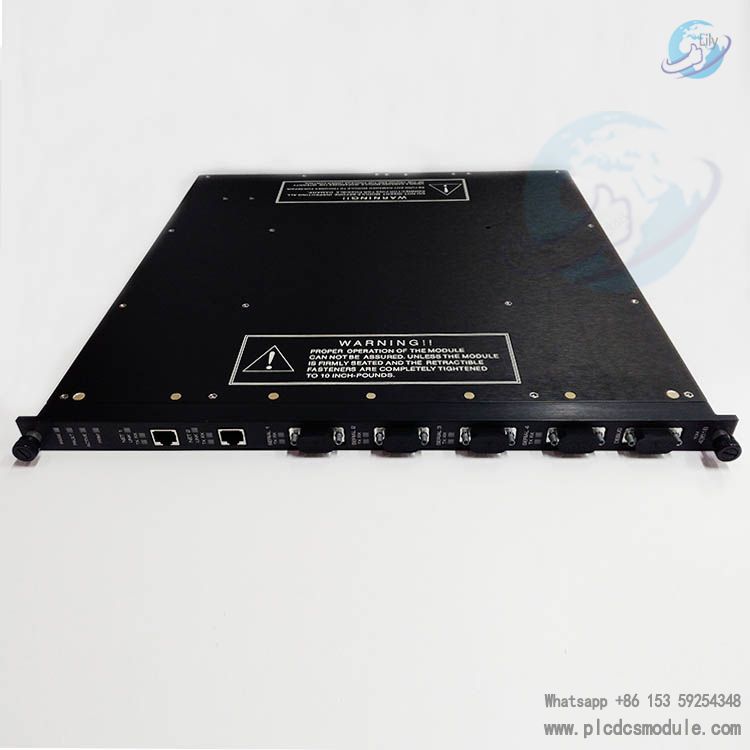

 3005319639
3005319639